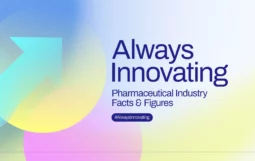How crossing regulatory borders means better access to medicines
Please click on the image above for this must watch video!
It’s universally agreed that patients should be able to expect medicines and vaccines to be available when they need them. Yet in some parts of the world, access to high-quality, safe, and efficient treatments can be a cumbersome/awkward walk through many, sometimes fatal, stumbling blocks.
To take just one example, it’s estimated that fake anti-malaria and anti-tuberculosis medicines lead to 700,000 deaths every year[i]. Medical products should save and improve people’s lives, not put them at risk.
The medical regulatory systems that underpin the entire journey of medicines and vaccines, from development to manufacturing to the final patient, are crucial to ensuring that quality is maintained. Even more so when today’s medical products often produced in one part of the world, packaged in another and supplied to yet another. The directives, regulations, standards, guidelines, specifications and procedures underpinning the supply chain all aim to keep treatments available and prevent disease. Just like a rail network, these systems must be interconnected, efficient and safe to prevent lower quality or fake medicines and vaccines being introduced, as well as address shortages in supply.
Today, only one country in five has a well-functioning regulatory system[ii]. What’s more, when regulatory systems change from country to country the approval processes and distribution of medicines and vaccines is delayed. Which means access is hampered, and patients are kept waiting.
The good news is that there is no need for every country to reinvent the wheel. As a global community, we already have the tools to develop more solid regulatory systems, and make real progress.
Creating a comprehensive, international system of regulatory supervision and harmonizing regulations across national boundaries will take increased collaboration, sharing best practice, and exchanging experiences and views. It is vital work which underpins our common goal to guarantee timely access to therapies for all patients, in every corner of the world.
In South Africa, the Medicines Control Council (MCC) has been strengthening regulatory frameworks and increasing multi-stakeholder cooperation for the past fifty years. The medicines regulatory authority operates through internal and external experts to control the manufacture, distribution, sale, and marketing of medicines. From 2017, the MCC will take on the authority for a far wider-reaching scope: the newly constructed South African Health Products Regulatory Agency (SAHPRA)[iii]. International cooperation and mutual agreements with foreign regulatory authorities is a cornerstone for how the newly-constituted authority will function.
What can we learn from this? That we need to stop working in silos, and look at best practices from other markets. We need to leverage expertise outside our own country and adopt globally-approved definitions for robust, coordinated regulatory action. Strong policies, strategies, processes and procedures are our armour to safeguard medicines and vaccines, minimizing risk throughout their lifecycle, and protecting patients worldwide.
Let’s keep working together to put better and stronger regulatory systems in place that ensure high-quality, safe and effective medical products. We need to bring in the human aspect into the way we manage healthcare and push for a change. Patients worldwide are waiting for a clear signal that solutions are possible.
[i] IFPMA website http://ifpma.org/subtopics/counterfeit-medicines/?parentid=265
[ii] IFPMA Corporate Brochure http://ifpma.org/wp-content/uploads/2023/01/i2023_IFPMA-Brochure.pdf
[iii] http://www.medicalbrief.co.za/archives/new-body-to-take-over-from-mcc-in-2017/
Author






